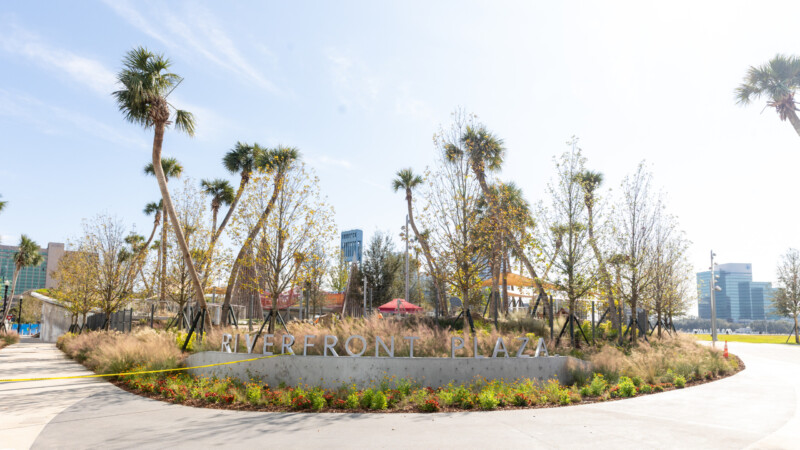The Florida Supreme Court on Monday rejected decades of legal precedents and upheld a law that will lead to preventing abortions after six weeks of pregnancy — but also cleared the way for voters to decide in November whether they want to enshrine abortion rights in the state Constitution.
The court issued two bombshell opinions that will dramatically restrict abortion in the coming months, while setting the stage for a fierce political fight in November.
In a 6-1 decision, justices ruled that a privacy clause in the state Constitution does not protect abortion rights. That overturned legal precedents dating to 1989 and effectively gave the go-ahead to a six-week abortion limit that the Republican-controlled Legislature and Gov. Ron DeSantis approved last year.
In a 4-3 decision, justices approved the wording of a proposed constitutional amendment that abortion rights supporters hope to pass in November. That proposal says, in part: “No law shall prohibit, penalize, delay, or restrict abortion before viability or when necessary to protect the patient’s health, as determined by the patient’s healthcare provider.”
The ruling on privacy rights will have the most immediate impact. The case stemmed from a 2022 law that imposed a 15-week limit on abortions, but lawmakers last year also tied the six-week limit to the case. The 2023 law said the six-week limit would take effect 30 days after “a decision by the Florida Supreme Court holding that the right to privacy enshrined in … the state Constitution does not include a right to abortion.”
In the 51-page majority opinion, Justice Jamie Grosshans wrote that the Constitution’s privacy clause does not address abortion and that voters did not understand it to include a right to abortion when they passed the clause in 1980.
“The Privacy Clause of the Florida Constitution does not mention abortion or include a word or phrase that clearly incorporates it,” Grosshans wrote in the opinion joined by Chief Justice Carlos Muniz and Justices Charles Canady, John Couriel, Renatha Francis and Meredith Sasso. “Era-appropriate dictionary definitions and contextual clues suggest that abortion does not naturally fit within the rights at issue. Reliable historical sources, like the technical meaning of the terms contained in the provision, the origin of the amendment, and the framing of the public debate, similarly do not support a conclusion that abortion should be read into the provision’s text.”
Grosshans added: “The decision to extend the protections of the Privacy Clause beyond what the text could reasonably bear was not ours (previous members of the Supreme Court) to make. As a result, we removed substantial authority from the people’s elected representatives to regulate abortion — a profoundly unique and complicated issue that affects society in many significant ways.”
But in a dissent, Justice Jorge Labarga wrote that he is “convinced that in 1980, a Florida voter would have understood that the proposed privacy amendment ‘included broad protections for abortion.’” He pointed, in part, to the U.S. Supreme Court issuing the Roe v. Wade abortion-rights decision seven years before the 1980 state constitutional amendment passed.
“The majority concludes that the public understanding of the right of privacy did not encompass the right to an abortion,” Labarga wrote. “However, the dominance of Roe in the public discourse makes it inconceivable that in 1980, Florida voters did not associate abortion with the right of privacy. Because of this, and with deep dismay at the action the majority takes today, I dissent.”
The U.S. Supreme Court’s decision in 2022 to overturn Roe v. Wade effectively left abortion decisions to states and touched off legal, legislative and political battles across the country. Florida abortion opponents had long sought to overturn the 1989 Florida Supreme Court ruling, in a case known as In re. T.W., which said the privacy clause included abortion rights.
DeSantis and lawmakers approved the 15-week abortion limit before the U.S. Supreme Court decision overturning Roe v. Wade. But the U.S. Supreme Court decision emboldened Republican lawmakers in Florida and other states to go further, passing measures such as six-week limits.
Also, the Florida Supreme Court has become far more conservative since DeSantis took office in 2019. He has appointed five of the seven members, and three justices who backed abortion rights retired from the court in 2019.
During an online news event held Monday by abortion rights supporters after the Supreme Court opinions were released, Cecilia Grande, an obstetrician and gynecologist, said the six-week limit “represents pretty much a total ban” on abortion in Florida. At least in part, that is because many women do not know they are pregnant before six weeks.
Monday’s ruling on the privacy issue will raise the political stakes for the proposed constitutional amendment on abortion rights that will appear on the November ballot.
The political committee Floridians Protecting Freedom, which started the amendment drive in May, submitted nearly 1 million valid petition signatures, far more than the 891,523 signatures needed to qualify for the ballot. But it also needed the Supreme Court to sign off on the wording of the proposed ballot title and summary — the words that voters see when they go to the polls.
Muniz, Canady, Labarga and Couriel made up the majority Monday in approving the ballot measure. Attorney General Ashley Moody had argued the measure was flawed and should be blocked.
“That the proposed amendment’s principal goal and chief purpose is to limit government interference with abortion is plainly stated in terms that clearly and unambiguously reflect the text of the proposed amendment,” the majority opinion said. “And the broad sweep of this proposed amendment is obvious in the language of the summary. Denying this requires a flight from reality. We acknowledge that the text of the amendment — like any legal text — presents interpretive questions, but we neither endorse nor reject any litigant’s assertions about how the proposed amendment might be interpreted in the future and our decision today takes no position on the scope of legislative discretion that would remain if the proposed amendment were to become law.”
But Grosshans, Francis and Sasso each wrote dissenting opinions.
“As written, the title and the ballot summary (which parrots the amendment) fail to give the voters what they need to make an informed decision; thus, both violate the truth-in-packaging law,” Francis wrote. “The title fails to communicate to the voters that the purpose of the proposed amendment is ending (as opposed to ‘limiting’) legislative and executive action on abortion, while inviting limitless and protracted litigation in the courts because of its use of vague and undefined terms. Just as it played out on the federal stage for over 50 years, the issue of abortion — far from the people settling the matter — will continue to be decided by each iteration of this court.”
House Speaker Paul Renner, R-Palm Coast, Sen. Erin Grall, R-Vero Beach, and Rep. Jenna Persons-Mulicka, R-Fort Myers, criticized the proposed constitutional amendment in an online news event after the rulings.
“This is not about government interference in abortion, but rather about allowing abortion up to the moment of birth, eliminating parental consent for minors and allowing non-medical workers to diagnose patients, determine fetal liability and approve late-term abortions,” said Grall, who along with Persons-Mulicka, has helped lead efforts to pass abortion restrictions.
But backers of the proposed amendment said they will quickly move forward with a campaign to try to pass it. The measure would require support from 60% of voters to pass.
“When voters head to the polls this November, they will send a message to Florida politicians,” Lauren Brenzel, the campaign director, said. “Decisions about whether or not to have an abortion should be between a patient and a provider, not between a constituent and their politician.”
News Service Assignment Manager Tom Urban and staff writer Ryan Dailey contributed to this report.







